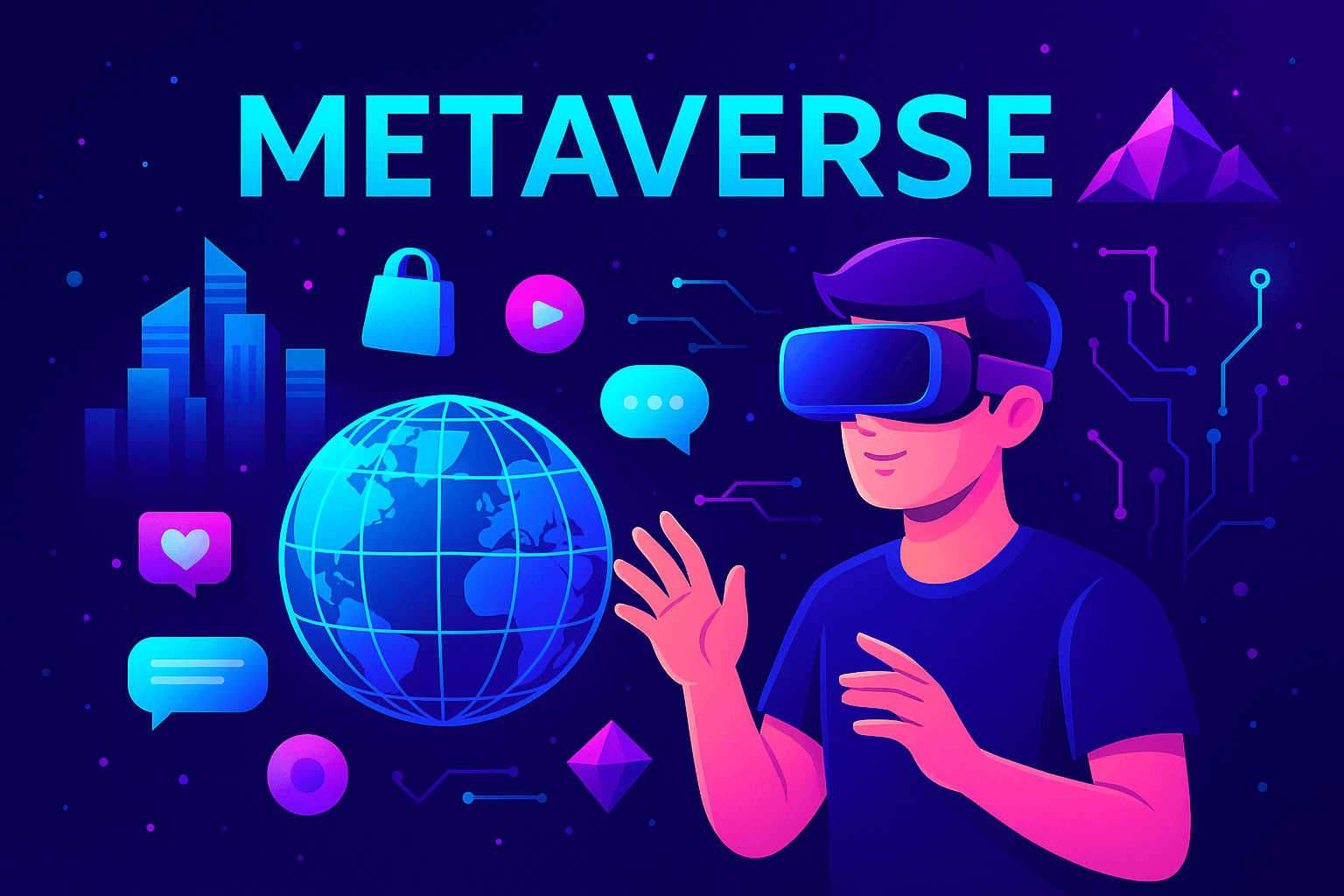Smart Digital Strategies: Exploring the Future with the Metaverse
Reading Time: 2 Minutes
The Evolution of the Metaverse: From Concept to Immersive Reality
Published on: April 25, 2025

We all know the tale of Alice diving into a fantastical world—curious, immersive, and wildly imaginative. The metaverse seems to echo that same energy, sparking debates across industries: Is it just hype, or is it truly the future of communication, business, learning, and entertainment?
As it stands today, the metaverse is a complex blend of augmented reality (AR), virtual reality (VR), and extended reality (XR). Though still evolving, it’s already attracting massive investments and technological innovation, positioning itself as the next phase of the internet—an immersive, interactive layer that merges the digital and physical worlds.
Read the full article
Long before Facebook became Meta, the concept of the metaverse existed. The term itself was coined by Neal Stephenson in 1992 in his sci-fi novel Snow Crash. But the seeds go back even further—to 1978, with MUD1, the first multiplayer, real-time, text-based virtual world.
Mark Zuckerberg described the metaverse as “the successor to the mobile internet”, where presence is redefined. It’s not about watching from the outside—it’s about being inside the experience. The metaverse, like any tool, isn’t inherently good or bad. It becomes what we build it to be.
Even today, many find the metaverse hard to define. As Apple’s Tim Cook pointed out, “I’m really not sure the average person can tell you what the metaverse is.”
At its core, the metaverse is a shared, 3D virtual space combining digital and physical realities. It spans online gaming, immersive social platforms, AR-powered shopping, and virtual events. A notable example: The 2022 Australian Open’s metaverse experience hosted on Decentraland.
Companies across industries—from gaming to AR/VR hardware to content creation—are betting big. In 2022 alone, over $120 billion was invested in metaverse initiatives. By 2024, the market is projected to reach $800 billion, with one-third of businesses expected to offer metaverse-compatible products and services.
The metaverse is brimming with promise, but its future depends on overcoming some critical hurdles:
Current networking limitations—like bandwidth, latency, and computing power—restrict user access and degrade real-time experiences. Take the Foo Fighters VR concert hosted by Meta, where only 13,000 of 61,000 registrants could attend.
AR/VR gear is still expensive and bulky. Lighter headsets, wearable sensors, and innovations like AR contact lenses are on the horizon, but mainstream adoption remains years away.
A lack of unified protocols limits cross-platform experiences. A metaverse equivalent of HTML could revolutionize accessibility and compatibility.
Without proactive regulation, the metaverse could amplify today’s internet issues—data exploitation, cyberbullying, misinformation, and deep fakes. Strong compliance, privacy standards, and ethical governance are non-negotiable for long-term success.
While interest is high, many investors are still learning the ropes. To succeed, businesses must focus on user-centered design, test scalable use cases, and adapt their models to this immersive landscape.
Much like Alice’s journey, the metaverse invites us into a realm of limitless creativity. From Web 3 innovations to immersive commerce and collaborative workspaces, this new world is taking shape.
The key to navigating it successfully lies in collaboration, inclusivity, and intentional innovation. Yes, it’s uncharted—and yes, it has its “Mad Hatters” and “Queen of Hearts”—but with the right guiding principles, it can become a platform for meaningful, human-centered experiences.
Let’s build the next chapter of the internet—together.

 Apple’s Privacy-First Updates in iOS 14 & iOS 15: How They’re Disrupting...
Apple’s Privacy-First Updates in iOS 14 & iOS 15: How They’re Disrupting...